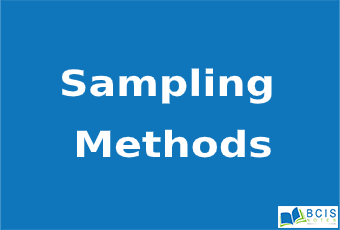
Sampling Method
When you are conducting research on some people or some group of people, it is rarely possible to collect data from every individual of that group. Instead, you choose the sample among them. The sample is a subset of the population. The process of selecting a sample is known as the sampling method. The number of elements in the sample is the sample size.
To draw a valid conclusion from the research, it is really important to carefully decide what or how you will take the sample from the large group.
There are several methods of selecting population units to be included in the sample. They are the sampling methods, broadly they are classified as:
1. Probability sampling/ Random Sampling
Under this method, each unit of the population has a certain probability of being included in the sample. There are four methods under this probability.
a. Simple Random Sampling
b. Systematic Random Sampling
c. Stratified Random Sampling
d. Cluster Sampling/ Area Sampling
2. Non-probability sampling/ Non-Random Sampling
Under this method of sampling, there is no pre-assigned probability of selection of sample units to be included in the sample. Some of the methods of non-probability are listed as follows:
a. Judgment/ Purposive Sampling
b. Convenience Sampling
c. Quota Sampling
d. Snowball Sampling
e. Self-selected Sampling
You may also like: Concept of Sampling

Leave a Reply